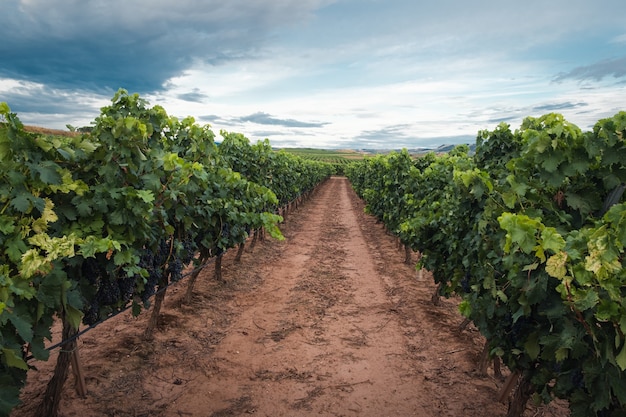
The next morning, we kicked off a day packed with exciting wine adventures, starting with a visit to a vineyard—a favorite of mine. There’s something special about vineyards that I love, though I can’t quite put my finger on it. Of course, the chance to taste the wine definitely adds to the appeal.
We headed over to the Campo Viejo vineyard, just a short 5 to 10-minute drive from the city center. Anyone can stop by for a day to soak in the full Rioja wine experience. We started with some cava, which I didn’t even know Campo Viejo produced since it’s not that common in the UK. I remember joking with someone about how funny it was to be sipping wine at 10 in the morning. Not that it’s unusual for me—I’ve had my fair share of bubbly in airport lounges before vacationing with friends.
We learned about wine production and how vast vineyards are in La Rioja, which is bigger than I thought, extending partly into the Spanish Basque Country. Rioja tops Spain’s wine production charts, with Campo Viejo being the leading Rioja producer in the country.
I’ve always liked Rioja, along with wines like Malbec and a really good Pinot Grigio—a taste I picked up during my university days. Despite my fondness for Rioja, I didn’t realize what a big deal it was in Spain.
We continued our winery tour, blown away by the place’s capacity. But we were reminded that quantity doesn’t matter without quality in Spanish wines. Still, it’s hard not to be impressed—and maybe a little envious—when you see 6 million bottles.
After the tour, we moved on to my favorite part of the day (besides drinking the wine)—creating our own wine blends. Rioja is made from three types of grapes: Mazuelo, Tempranillo, and Graciano. Our challenge was to find our favorite blend, which would become our signature wine.
Mazuelo is fruitier and smoother, Tempranillo has a bit of an edge, making it great for blending, and Graciano is more complex, with a taste that lingers and makes you savor it more. You typically wouldn’t drink just Graciano, as it’s too sharp, similar with Tempranillo, while Mazuelo might be too plain, so the aim is to find a well-balanced mix.
I figured I’d prefer a fruitier blend, leaning more on Mazuelo with a touch of Graciano. But after several taste tests (purely in the name of research, of course!), I discovered my perfect mix: 70% Graciano, 25% Mazuelo, and 5% Tempranillo. My previous test of 70/20/10 was just too sharp.
I bottled my special blend, complete with corking and labeling, and then joined the group for lunch, more bottles of Campo Viejo in tow. After lunch and thoroughly exploring the vineyards, we packed up and made our way to Basque Country, specifically Bilbao.
In Bilbao, we quickly checked into our hotel and headed straight out for a boat tour along the river. It was a nice, relaxed way to spend the evening and catch some city sights we’d missed on an earlier visit.
Once the boat returned to the harbor, it was dinnertime, so we headed to the city center to a restaurant we’d booked. We indulged in croquettes, jamón, salads, seafood, and beef steaks until late. By the end of our meal, it seemed like we were the only guests left in the restaurant. That night, the streets were almost deserted, making it the perfect setting for some nighttime photography and a leisurely stroll through the city.

